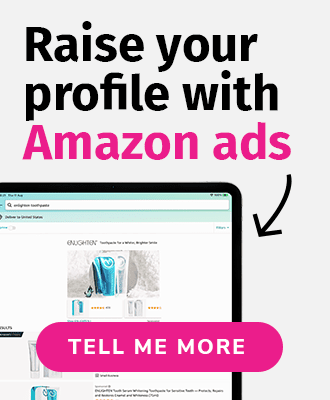Q4 2020 is shaping up to be big. With the COVID-19 pandemic boosting online shopping overall, a plausible October Prime Day, and the usual holiday shopping season, both sellers and vendors should be preparing earnestly. The fourth quarter of the year begins October 1 and goes through the end of 2020. Meaning, Q4 this year encompasses Amazon Prime Day, Black Friday, Cyber Monday, and the barrage of sales before Christmas (and don’t forget year-end deals). As an Amazon seller, preparing for the holiday shopping season should be well underway. Especially if you want to beat the competition. Are you ready?
Check and optimise your Amazon product detail pages
Holiday shopping season is hectic enough for sellers as it is. Get ahead of potential issues and prepare your listings. See common listing errors and fix them now.
Do all of your products have great images that meet Amazon guidelines? Are your titles in the clear? Do you have keywords uploaded to drive traffic to your products? Are product descriptions and features accurate? Not only will this increase conversion in Q4, but optimised listings that answer customers FAQs adequately will hopefully mitigate and lower returns from dissatisfied customers in January and beyond.
Respond and engage with reviews and customer questions
Engage with customers by responding to concerns or answering product questions. Monitor reviews and rankings so you can adjust product descriptions and details to be as accurate as possible and avoid negative feedback. By deep-diving and fixing any issues prior to Q4, you can avoid a negative waterfall effect on sales, or worse, suspension.
Get your promotions ready
If you are a vendor wanting to be included in Amazon’s sitewide promotions for Black Friday and Cyber Monday, the window is now opened to submit these deals, and can be found in your Merchandising recommendations in Vendor Central.
For sellers, deal submission for holiday events are also starting to show up in Seller Central.
Event windows:
October 26 – November 19: Early Black Friday Deals
November 27: Black Friday
November 30: Cyber Monday
Submission deadlines:
October 9: Black Friday and Cyber Monday
October 19: Early Black Friday Deals Week 1
October 26: Early Black Friday Deals Week 2
November 2: Early Black Friday Deals Week 3
Products with great visibility or a lot of inventory can also be offered up as Lightning Deals, Best Deal (vendors) 7-Day Deals (sellers) promotions during Q4. Good sales on a single product can increase traffic and drive sales on the whole brand. To that effect, be sure any brand stores you have are in great shape to convert customers who might arrive there. Learn more about deal types and how to run them.
For Fulfilment by Amazon sellers, FBA inventory for Black Friday and Cyber Monday must be received at an Amazon fulfilment centre by November 6, 2020.
Plan your Amazon Advertising
Q4 is not the time to run tests or create new ads. You should know what works and what your plan is for Q4 by testing now. Learn about Sponsored Brands and Sponsored Products, determine your budget, and set these up in advance.
“Amazon’s systems work off of data and results, without this they won’t run to their fullest. Q4 is the time when you should be optimising ads; adjusting bids, identifying new keywords, reviewing performing and underperforming keywords,” says Carina McLeod, eCommerce Nurse founder and CEO.
Forecast properly
You do not want to run out of inventory in Q4. This would mean being unable to make sales or capitalise on Q4 traffic. Due to the FCs’ busiest period, you also may not have time to replenish. Long lead times should be expected. On the contrary, you don’t want to be sitting on too much stock in January—which can happen if stock arrives in too tight of a window to sell. Plan ahead now. Remember, holiday sales run right up to Christmas Eve, as some locales offer same-day delivery. Plan enough stock to cover this time.
Accurate forecasting can allow you to plan and prevent problems. Ideally, your stock should arrive at Amazon in October. When forecasting, look at previous demand, your marketing initiatives, and sales trends and uplift. Using a tool such as RestockPro can be useful if you have a hard time with forecasting or are a newer seller to Q4 on Amazon.
Lead time can be an issue for sellers during the holiday sales period if they are not careful. Fulfilment centers are at max capacity in all locales. Plan for it to take twice as long to receive shipments during Q4 than other times of the year. This helps avoid issues Amazon might have clearing stock and allows you to anticipate it taking more time rather than stressing.
Pay attention to Amazon storage limits
Given the unprecedented challenges of the pandemic and increased demand for the peak period, Amazon has introduced some adjustments.
Inventory Performance Index threshold change
To ensure all products have space available during peak, Amazon is changing the IPI minimum threshold requirement to 500. Sellers below 500 will be subject to limits effective September 1, 2020 through the end of the year. The majority of sellers will not be impacted by this change. Most sellers with IPI scores below 500 will have more storage space than they used last year.
You can improve your IPI by following the guidance on improving sell through or reducing your excess and stranded inventory shown in the Inventory Performance Dashboard.
Quantity limits
To maximise selection for customers during peak, Amazon has introduced ASIN-level quantity limits on FBA products. Most products will have enough space available for more than three months of sales.
You can view quantity limits for your products on the Restock Inventory page and the Restock report.
Even with accurate forecasting, you should still have a backup plan for if you run out of stock or cannot replenish. For example, FBA sellers may consider switching over to Fulfilled by Manufacturer (FBM). This may help you avoid missed sales. Seller Fulfilled Prime is another option. Apply as soon as possible to minimise wait times.. Have a plan for if you run out of stock on key items. You can hopefully redirect your focus (marketing, ads, etc) to another product or strategy.
Plan a pricing strategy for the season
Know your product and brand. For some items, Q4 is not going to be your peak period. If you sell fitness products or supplements, for example, use Q4 to prepare for your Q1 peak period.
Whatever your product, implement a pricing strategy with a timeline to ensure you are not sitting on large amounts of stock outside of peak periods. Plan your price drops tied to the percentage of inventory you need to clear. For instance, if you are sitting at 75% of your original inventory after Black Friday and Cyber Monday, you need to take quick action. Tighter margins could benefit you in the long run if you end up avoiding long-term storage fees or costly removals.
Lastly, plan now how you will approach Buy Box wars on Amazon. These are inevitable during Q4 when sellers will compete hard to win sales. Decide how aggressive you want to be, whether that means lowering prices to win the Buy Box or maintaining a certain price while opportunists sell through items leaving you a path to the Buy Box.
Prepare for Brexit (UK sellers)
Are you currently utilising the European Fulfilment Network? Are you ready for Brexit? The UK-EU relationship transition period ends December 31. The single market and customs union will no longer be in effect, as of January 1, 2021. Learn about what this means for FBA, and how to navigate the new situation. It will take time to adjust and plan, so start as soon as possible.
Stay agile and flexible during Q4
Q4 2020 is shaping up to be an extremely busy time for sellers and vendors on Amazon. The fourth quarter period is the time to be flexible, monitor your business, and be reactive. Have a plan, but also expect the unexpected. Take action and respond to any issues quickly and decisively.
Of course, eCommerce Nurse is here to provide expert guidance on all of the above for sellers and vendors looking for individualised attention. Contact us for expert assistance.




